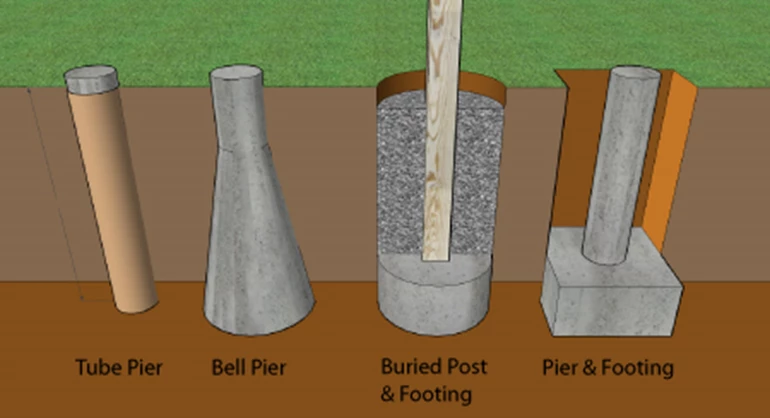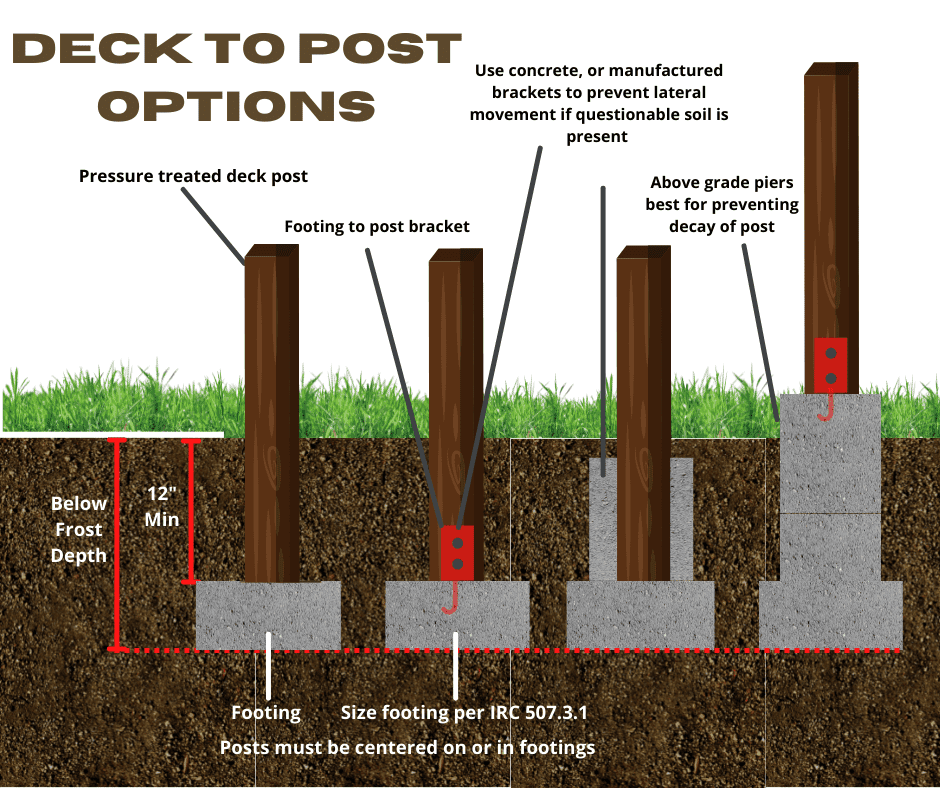Structure from the Ground Up: The Ultimate Guide to Designing and Setting Up Deck Footings
Structure from the Ground Up: The Ultimate Guide to Designing and Setting Up Deck Footings
Blog Article
Specialist Tips for Setting Up Deck Footings to Assistance Your Outdoor Room
When it comes to building a deck, among the most important components to think about is the installment of proper grounds. These footings are the structure whereupon your outside area will rest, giving stability and support for several years to find. Yet exactly what does it take to install deck grounds properly? In this conversation, we will explore professional pointers and strategies that can aid make sure a resilient and effective deck installment. From selecting the ideal kind of footings to staying clear of common mistakes, we will offer you with the understanding and understandings you need to confidently begin on your deck-building journey. So, allow's dive right in and discover the secret to a strong and resilient outdoor space.
Relevance of Correct Deck Grounds
Correct deck footings are necessary for making certain the security and longevity of your outdoor space. When creating a deck, it is important to take notice of the structure on which it will certainly relax. Deck footings offer the necessary support for the whole structure and aid disperse the weight uniformly - Deck Footings. Without strong and correctly installed grounds, your deck may end up being unsteady, leading to safety threats and expensive repair services.

Along with stability, appropriate deck footings also add to the longevity of your exterior room (Deck Footings). Grounds that are made and built to endure the elements and dirt problems in your area will certainly help protect against the deck from shifting or resolving over time. By guaranteeing the grounds are appropriately sized and installed, you can decrease the danger of damage to the deck framework, prolonging its life-span and lowering the demand for expensive repairs or substitutes

Selecting the Right Kind of Grounds
When picking the appropriate type of grounds for your deck, it is necessary to take into consideration elements such as soil conditions, regional building ordinance, and the overall design of your outdoor space. The kind of footing you pick will certainly play an important duty in making certain the security and long life of your deck.
One usual kind of ground is the concrete ground. Concrete footings are suitable for many dirt problems and offer excellent assistance for decks. They are commonly installed below the frost line to stop changing and settling because of cold and thawing cycles. Another option is helical piers, which are perfect for locations with unpredictable dirt or high water tables. These piers are screwed right into the ground and give strong support for the deck.
Sometimes, you might require to make use of customized grounds, such as heap grounds or deep structures, if you are developing a multi-level or big deck. These footings are designed to distribute the weight of the deck over a bigger area, ensuring stability and preventing sinking or clearing up.
Prior to selecting a kind of ground, it is important to speak with local building codes and regulations to ensure conformity. Furthermore, think about the design and planned use your outside area. Elements such as the size, form, and load-bearing demands of your deck will influence the kind of footing that is most ideal.
Preparing the Ground for Footing Setup
To appropriately prepare the ground for footing installation, it is essential to analyze the soil conditions and take necessary steps to make sure stability and sturdiness of the deck. The initial step is to excavate the area where the grounds will be installed. The deepness of the excavation will depend upon the frost line in your area and the certain needs of the deck design. It is essential to eliminate any vegetation, rocks, or debris from the excavation to make certain a solid foundation.
Once the location has actually been excavated, the next action is to portable the soil. This can be done utilizing a plate compactor or by using a hand tamper. Condensing the soil assists to get rid of any kind of gaps or air pockets, which can lead to working out and instability in time.
After compacting the dirt, it is necessary to lay a layer of crushed rock or smashed stone at the end of the excavation. This will offer drainage and assistance to protect against water from pooling around the grounds, which can bring about erosion and instability.
Step-by-Step Guide to Setting Up Deck Footings
After effectively preparing the ground for footing installment, the following step is to start the process of installing deck footings. This detailed guide will offer you with a clear understanding of exactly how continue reading this to set up deck grounds for your exterior room.
Identify the place: Begin by noting the settings of the deck footings utilizing stakes and string. Make sure that the places line up with the layout and format of your deck.
Dig the openings: Utilize an article opening miner or an auger to dig the openings for the footings. The depth and diameter of the holes ought to be in accordance with regional building ordinance and the particular demands of your deck design.
Level the openings: Use a degree to ensure that the holes are dug to the appropriate deepness and are degree with each other. (Deck Footings)
Include crushed rock: Area a layer of gravel at the base of each opening to enhance water drainage and prevent the timber from decomposing.
Place the grounds: Put the footings into the openings, making sure they are degree and plumb. Use a level and a gauging tape to make certain accuracy.
Secure the grounds: Put concrete right into the holes around the footings, loading them to the top. Use a message level to guarantee the footings stay level as the concrete sets.
Permit time for curing: Let the concrete cure according to the producer's instructions before continuing with the deck building and construction.
Typical Mistakes to Prevent During Footing Setup
One vital facet to take into consideration throughout the setup of deck grounds is avoiding typical errors that can endanger the security and longevity of your outside room. While deck grounds may feel like a uncomplicated and straightforward component of the building and construction process, neglecting particular factors can result in costly fixings and possible safety and security dangers down the line.

In addition, ignoring to install proper water drainage procedures can cause water to build up around the grounds, causing rot, decay, and the ultimate weakening of the deck's foundation. Using the incorrect kind of footing material or stopping working to adequately protect the grounds can jeopardize their structural stability.
To stay clear of these mistakes, it is necessary to seek advice from an expert or follow industry guidelines to make sure correct footing setup. By doing so, you can make certain the stability and longevity of your exterior room, offering a secure and delightful atmosphere for many years to find.
Verdict
To conclude, mounting correct deck grounds is vital for the stability and longevity of your outdoor area. By selecting the best sort of grounds and effectively preparing the ground, you can guarantee a solid foundation for your deck. Complying with a step-by-step guide and avoiding common blunders during footing installment will certainly better boost the longevity and safety and security of your deck.
Correct deck grounds are necessary for making certain the security and durability of your exterior area. find out this here The footings serve as a link in between the ground and the deck, allowing the weight of the deck and its occupants to be spread equally into the soil.One usual type of footing is the concrete ground. Insert the grounds: Put the grounds right into the openings, making sure they are degree and plumb. Protect the footings: Put concrete into the holes around the grounds, filling them to the top.
Report this page